What do you really need in a laptop?
We'll help you wade through the processors and gimmicks.
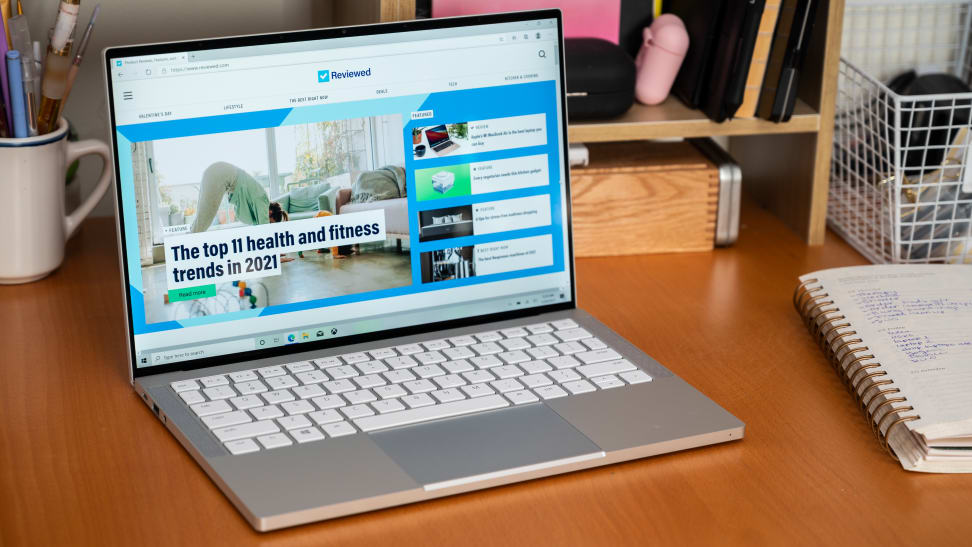 Credit:
Reviewed / Betsey Goldwasser
Credit:
Reviewed / Betsey Goldwasser
Products are chosen independently by our editors. Purchases made through our links may earn us a commission.
Shopping for a laptop these days is a seriously complicated affair. There’s a sea of model names, tons of features, and multiple add-ons and upgrades to dig through, all of which is constantly in flux. But don’t worry, we’re here to help. Our handy guide dives into the essentials so you can choose which features you need in a laptop and what hardware you need to get those features.
Before you start worrying about which processor you’ll get or how much RAM you’ll need, you need to figure out what you plan to do with the laptop. Will you be running a bunch of programs at once for work, blazing through some games, or will you mostly watch Netflix and open up Google Drive? Are you going to take this laptop everywhere you go, or will you barely stray from your desk? Below, we’ll sort through these questions so you can get the perfect laptop for you at the right price. And if you’re a total beginner, we recommend checking out our Glossary of terms at the bottom before digging in.
Choosing an operating system
While you can run most programs on any of the major operating systems (OS), some are suited to certain tasks better than others. First, check if you want to use a program that’s only available for a certain OS (for example: many modelling programs only run on Windows). If so, you’re locked to the OS you need for it. Otherwise, choosing the right OS for you is really about price and preference.
ChromeOS
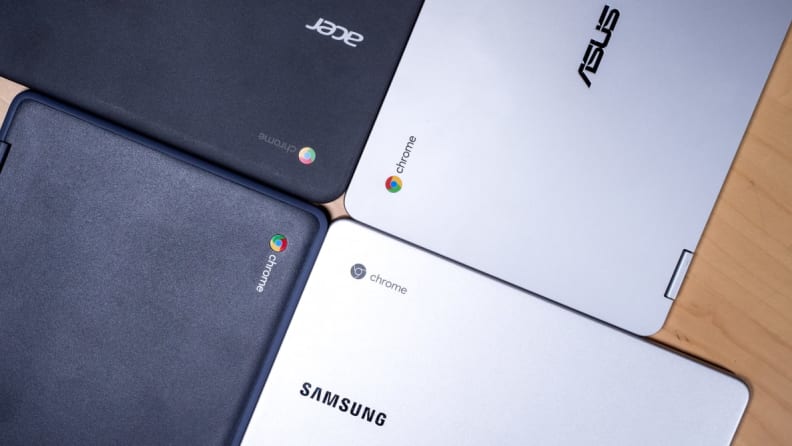
ChromeOS is easy, safe, and lightweight to run.
Because ChromeOS is much easier to run than Windows or MacOS, Chromebooks are often much faster for the same hardware. If you are shopping for a budget laptop, ChromeOS is usually the way to go if you want a quick, snappy experience, as long as you don’t need Windows-only software.
The Google app store has many programs available for ChromeOS to replace your old favorites, but the chances are high that your favorite programs already have a browser version available. Microsoft Office, Slack, and Zoom are all available via web browser; browser-based programs like Photopea can replace basic Photoshop editing, as well.
ChromeOS may not be for you if you need to do audio editing, heavy photo or video editing, any sort of modelling or engineering, or you can’t bear to part with your Windows or Mac-exclusive software. In the past, we would have advised gamers to steer clear too, but nowadays cloud-based gaming with Google, Nvidia, Microsoft, and Sony are all great ways to play AAA games without Windows as long as you can tolerate a bit of lag.
Another concern with ChromeOS is data privacy. Google’s privacy practices are not necessarily more intrusive than Apple’s or Microsoft’s practices, but Google has been known to sell users’ data. However, much of this data provides essential information for its services (Google Maps, suggested websites, etc.). Because Google’s security practices have faced scrutiny in recent years, it has also taken steps to restrict data collection from third parties.
MacOS
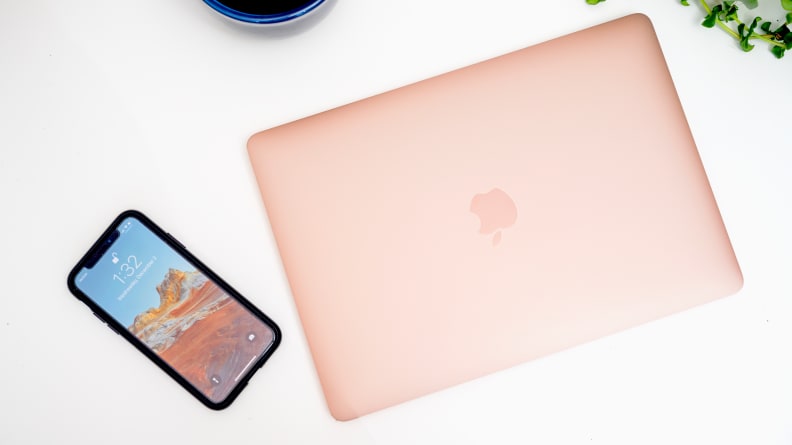
MacOS is the best of both worlds: easy to use but also powerful and flexible. Sadly, it is only available on Apple devices.
Because Apple has complete control over how Macs are built, its PCs usually operate seamlessly. Additionally, its auto-update system does an excellent job of keeping the laptop up to date while staying out of the user’s way.
For programmers, MacOS offers a very powerful terminal that’s easy to use, and the lightweight nature of the OS means that you can worry less about breaking something (if you know what you’re doing). You can do the same tasks on Windows, but they often involve workarounds and extra software that’s not necessary for MacOS.
If you’ve been turned off from Apple because of their high price tags, you should reconsider this generation: the M1 MacBooks are actually one of the most powerful laptops you can get for about $1,000, and they have the best battery life of any laptop. With a 13-hour battery life and enough performance to smoothly run most software, the MacBook Air is our top pick of the moment.
Like ChromeOS and Windows 10, one of MacOS’s biggest weaknesses is its data privacy. It is slightly above its competitors in that Apple promises not to sell your data, but that doesn’t paint the whole picture. Apple needs to collect some data to personalize your MacOS experience, and data can always be leaked or hacked.
Windows 10
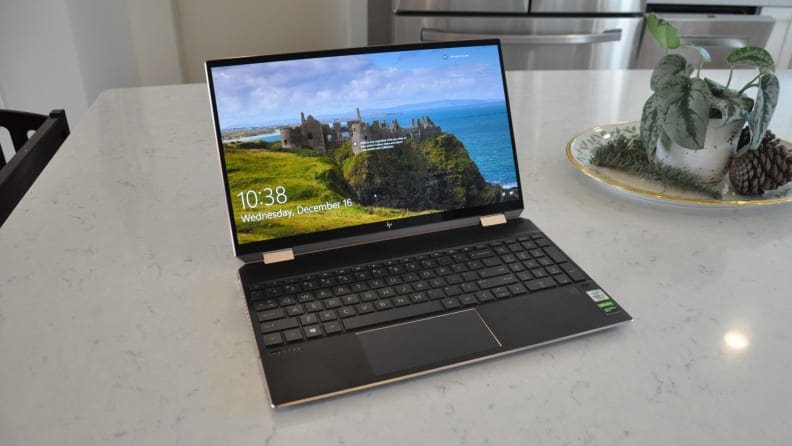
Windows 10 is compatible with many apps, and it's user friendly these days.
Microsoft keeps as much of the code as it can from legacy OSes with each new iteration of Windows, meaning that you can often get ancient programs running with minimal developer support. Windows 10 is also the default OS for many app developers, since most PCs run on Windows—there is virtually no task or feature you can’t find either in Windows itself or through a program that will run on Windows.
The downside is that the 30 years worth of code has accumulated some virtual dust. Running into driver issues or buggy features isn’t uncommon, since Windows works with a much bigger variety of hardware than MacOS or ChromeOS do.
If you’re worried about safety on a Windows machine, you shouldn’t be. While hackers target Windows more often because of its large user base, Windows’ built-in security is quick to catch threats. Basic computer security precautions apply to all operating systems—don’t open fishy links, scan any files you download, and stick to websites you trust. If you follow these steps, you will have a much better chance of avoiding viruses on any platform.
That said, Windows 10 collects a lot of data by default: your internet usage, your voice, your geolocation, and so on. This data gives Windows the ability to customize your experience, but it is important to acknowledge that you are now part of a data set vulnerable to leaks or Windows-wide hacks. Windows is no better or worse than MacOS or Chrome OS, but there are steps you can take to minimize your digital footprint.
Linux
You’ve probably heard of Linux, but it’s rare to find in the wild. It’s the only open source operating system of the bunch, and it allows you to tweak your OS from the kernel up. Taking full advantage of Linux’s flexibility requires a lot of technical knowledge, but there are also Linux versions that come ready to use after installation.
Brilliant developers have also made beautiful, thoughtful versions of Linux that are as intuitive as MacOS and ChromeOS. If you want to prolong the lifespan of your beloved laptop that may be older than your children, then Linux Mint runs well on ancient hardware, and it’s very easy to install.
If you are concerned about privacy, Linux is by far the best OS. Linux is not owned by anybody, and its open-source nature means that any data tracking built into the OS will be spotted quickly by the community. Most distributions of Linux will not collect your data, sell your data, or otherwise track your data, keeping you more secure from data leaks than with ChromeOS, MacOS, or Windows 10. All three of these collect your data, leaving you vulnerable to hacks or leaks even if you otherwise use best security practices.
Choosing which features you need
Now that you know the basics of each operating system, you can narrow your search based on the features you need.
A laptop’s ability to run software smoothly depends on its RAM, CPU, storage drive, and GPU. If money is not an issue, you should always get as much power as possible, as it’s easier to start with the best than to upgrade later. Which element is most important to you depends on the nature of your PC use.
Casual users
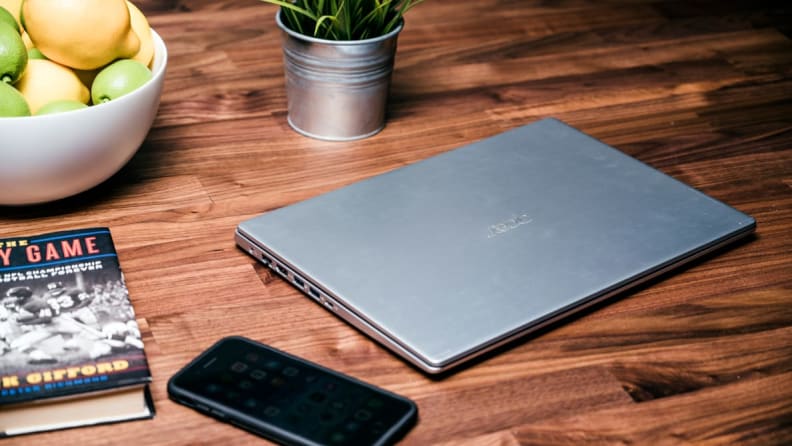
A budget laptop like the Acer Aspire 5 will meet your needs if you mostly browse the web.
8GB of RAM should be enough to run a reasonable amount of browser tabs and a couple programs. An 11th gen Intel Core i5 or an AMD Ryzen 5-3500U / 5-3600U will give you plenty of power to keep going for 3 or more years, although an Intel Core i3 / AMD Ryzen 3 would be fine if you want to save money (they’ll just be a little slower).
A 256GB SSD (solid state drive) is fine if you store your documents in the cloud; otherwise we’d advise getting a 512GB SSD. Solid state drives, which are extremely zippy compared to storage drives of years past, are now the norm, making newer laptops much faster from the moment you open the lid. Stick to integrated graphics rather than discrete graphics, as discrete graphics add an extra cost you won’t need unless you play many 3D games. You can easily find all of these specifications for $700 or less, with options above $500 offering better build quality. The HP Envy x360 is a great laptop in this range, and the Acer Aspire 5 is an excellent choice for those on a tighter budget.
Power users and casual content creators
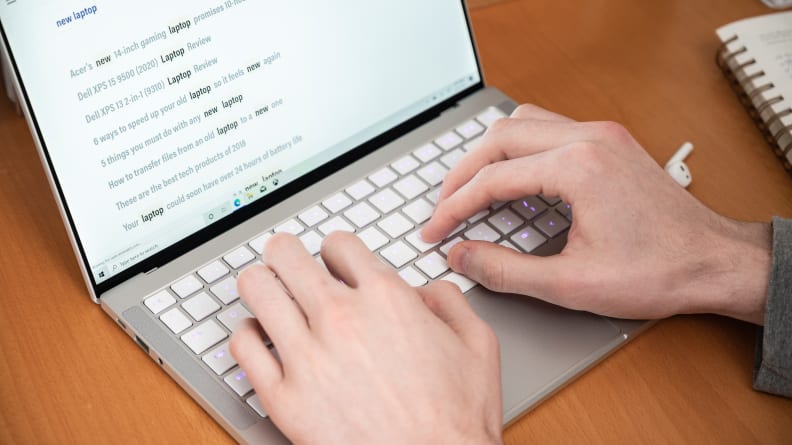
At this price range, there are few demands a laptop can't meet.
To run a big Photoshop file or a scary number of browser tabs without lag, you should get 16GB of RAM and a high-end CPU. An Apple M1, Intel Core i7 10th/11th gen, or AMD Ryzen 7-4500U should offer enough performance for anything you may need. While a 256GB SSD will be OK if you use cloud services, we strongly recommend upgrading to a 512GB SSD to have enough space to store your programs and files. You should budget between $800 and $1,500 for this range, with the higher end of the range representing laptops with better battery life and build quality. The MacBook Air is by far the best value in this category, with some of the best performance we’ve ever seen in a CPU and a 13-hour battery life. We've tested many other great picks in this range, like the HP Spectre 14 and the Dell XPS 13 9310.
Gamers, professional content creators, scientists
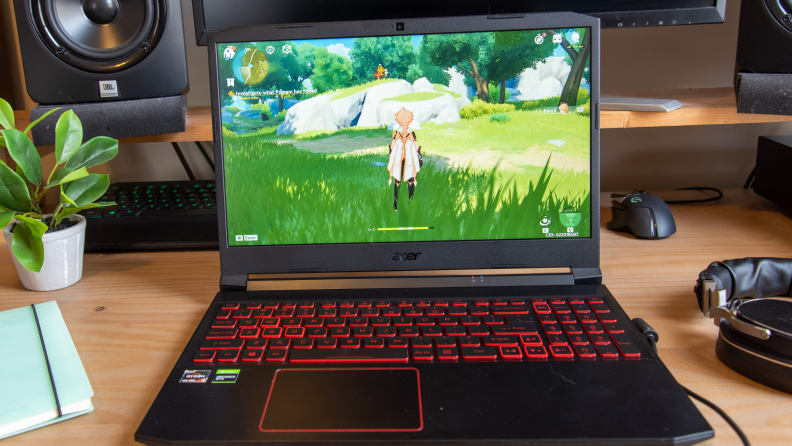
With the addition of a GPU, laptops can perform much more graphically demanding tasks like play 3D games or run CAD software.
Between the CPU, the RAM, and the GPU, the GPU is most likely to bottleneck your gaming performance in a low to mid-priced gaming laptop. An Nvidia GeForce GTX 1650/Ti, GTX 1660/Ti, or RTX 2060 are the sweet spot for high-refresh online games like Fortnite, Overwatch, or League of Legends.
If you’re more of a cinematic AAA gamer, you should consider splurging on an RTX 2070/SUPER, RTX 2080/SUPER, RTX 3060, RTX 3070, or RTX 3080. In laptops, there isn’t a huge performance boost between the RTX 20-series and RTX 30-series GPUs, so don’t worry too much about getting last-gen hardware. Generally, a GPU can add a few hundred dollars to the cost of a laptop. For most gamers, the Asus ROG Zephyrus G14 is an awesome laptop with great performance, battery life, and ergonomics that will prove useful for work as well as gaming. If you need the best gear money can buy, the Razer Blade 15 Advanced has flagship hardware and an immaculate 4K OLED display.
Modern laptops have a boatload of extra features
You're not stuck with the classic clamshell laptop anymore. Many mid-range and premium Windows laptops have touchscreens and can double as a tablet, including some of our favorite laptops. Some laptops are also compatible with a stylus, like the Microsoft Surface Book 3 or Galaxy Chromebook 2. Some laptops are even foldable, like the Lenovo ThinkPad X1 Fold.
Regardless of form factor, make sure you have the ports you need if you don’t want to use a dongle. In our experience, audio jacks, USB ports, USB-C/Thunderbolt ports, HDMI, and MicroSD ports are the most helpful, but you’ll find that a plethora of ports is getting harder to find in modern laptops. Additionally, consider how you want to log on: many laptops (like the MacBook Air and the Lenovo ThinkPad X1 Nano) have fingerprint readers and Windows Hello (a facial recognition login system) to make logging in faster and easier than ever.
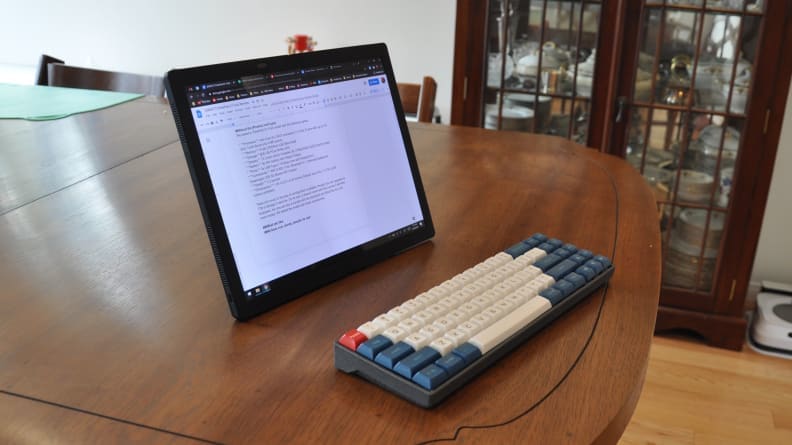
Some laptops can double as a tablet, like this Lenovo ThinkPad X1 Fold.
Finally, test the keyboard, trackpad, speakers, and webcam in person if you can. These features are highly subjective, and you need to find what you like in a laptop—no matter how “good” a laptop may be on paper, nobody wants to use a laptop with a cramped trackpad.
If you need the fastest connection possible, you should plug your laptop into Ethernet. Some laptops have a port built into the chassis, but you can get Ethernet with little lag through an Ethernet to USB-C dongle. Otherwise, look out for Wi-Fi 6 (sometimes called 802.11ax) and Bluetooth 5.2. They’re both leagues faster and more reliable than their predecessors, blurring the line between wired and wireless connectivity.
Display
Display size and display quality are tricky—while there’s few cons to more powerful processors (besides the extra cost), picking up a display that’s bigger or denser than you need can sour your experience. Below are a few important display aspects to consider.
Screen size
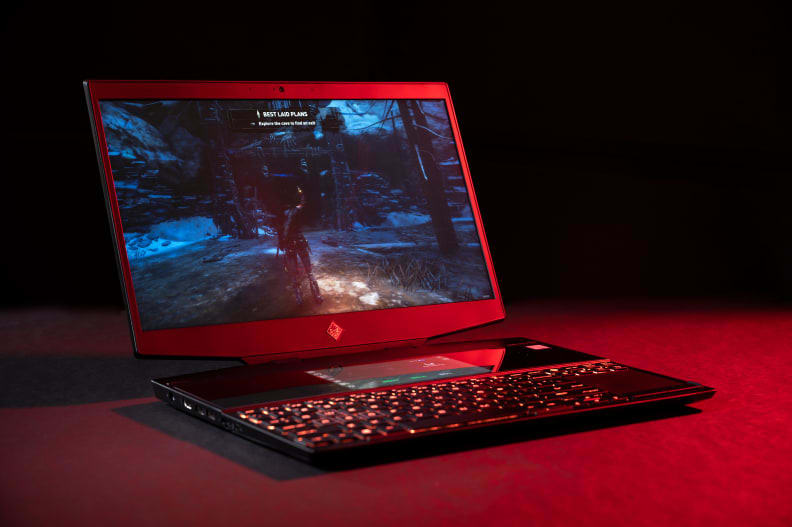
Large 17-inch laptops like this one tend to weigh 6 or more pounds, making them a pain to travel with. On the plus side, they have a huge screen.
If you’re going to carry your laptop around everyday and on flights or into other cramped quarters, a 13-inch to 14-inch laptop is your best bet. If you don’t see yourself moseying away from your desk anytime soon, a 15.6-inch or even 17-inch laptop could be the better option. If you’re not sure what you will do with your laptop, 15-inch laptops are a good compromise: they offer space, but they won’t weigh you down too much.
Resolution
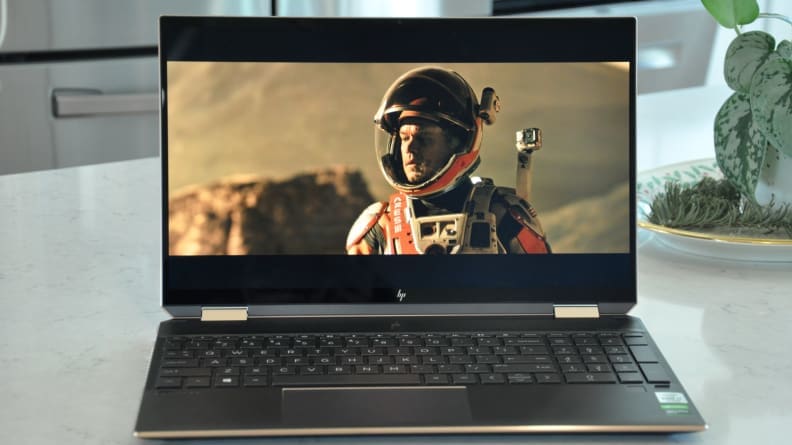
The HP Spectre 15 4K OLED screen is gorgeous, but it saps battery really quickly compared to the 1080p version.
You also need to consider what screen resolution you want. Don’t spring for the 4K screen right away—4K screens sap a lot of power from the battery compared to 1080p screens. If you need the portability more than you need the clarity, consider the lower resolution option—for the majority of applications, 1080p HD will suffice. On the other hand, even if you’re on a budget, try to spring for a 1080p laptop over a 720p laptop, as the lower resolution could cause more eye strain.
Generally, a 1920 x 1080p screen will look sharp in up to 15.6-inch displays, and a 3940 x 2160p (or 4K) screen will look sharp in up to basically theater-sized screens. Between 15.6-inch and 24-inch displays, 2K / QHD resolution is the sweet spot between clarity and power consumption.
Refresh rate
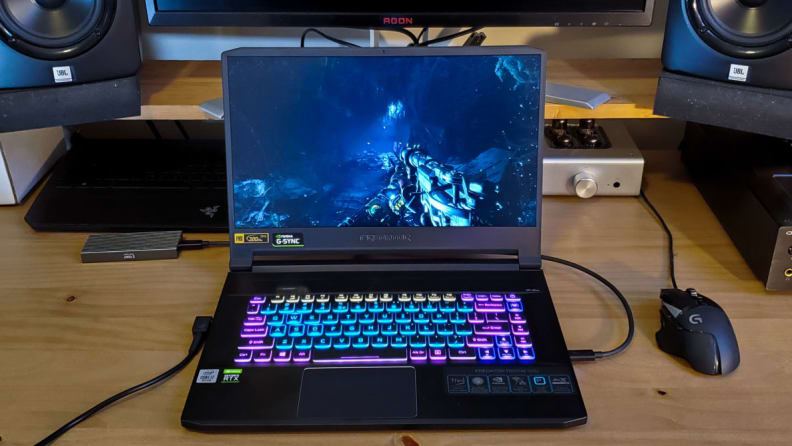
High refresh rate screens like the one on this Acer Predator Triton 500 tend to have duller colors than their 60Hz counterparts.
If you do a lot of film editing or gaming, you’ve probably wondered if you should get a screen with a high refresh rate. 60Hz screens tend to have better color accuracy than their high refresh rate counterparts, so stick to a 60Hz screen if you value picture clarity and vibrance above all else. 144Hz screens can be a little muddy, so make sure you get a laptop with as close to 100% sRGB coverage as possible to avoid this common problem.
If you don’t know if you want a 144Hz, 240Hz, or 60Hz screen, you’re better off getting a screen with a higher refresh rate if you don’t need perfect colors or you’re trying to do highly precise, very fast tasks like playing competitive esports. To make the most of your high refresh rate screen, upgrade the CPU as much as you can afford to—laptops with high refresh rate screens already have excellent discrete GPU options that can keep up with the screen, but a mid-range CPU will limit a game’s refresh rate if it can’t keep up with the GPU.
Battery Life
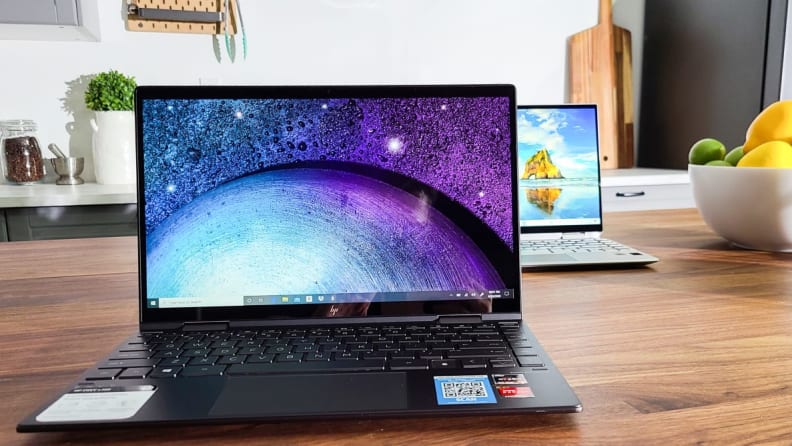
These days, it's easy to find a laptop that can last an entire workday.
On the whole, ChromeOS and MacOS are leagues ahead of Windows when it comes to battery life. Both Chromebooks and MacBooks have optimized power consumption for maximum performance gains, leading to battery lives north of ten hours.
If you need a laptop with long battery life, the M1 MacBooks are the way to go. The MacBook Air has a thirteen-hour battery life while the MacBook Pro 13 has a 14-hour battery life. If you’re looking for a Windows option, the HP Spectre 14 has a nine-hour battery life.
On the other hand, if you need a laptop with a discrete GPU, you may find yourself sacrificing quite a bit of battery life. The Acer Nitro 5, which has a mid-range CPU and GPU, has 6 hours of battery life when surfing the web, making it the gaming laptop with the longest battery life we’ve tested. By comparison, the flagship Razer Blade Advanced laptop has the longest battery life of flagship gaming laptops we’ve tested, and it can only manage a little over 3 hours.
Specs at a glance
If you want to know exactly where on the food chain popular components fall, check out this handy table:

Here you can easily see what kind of specs we recommend depending on your use case.
Time to buy
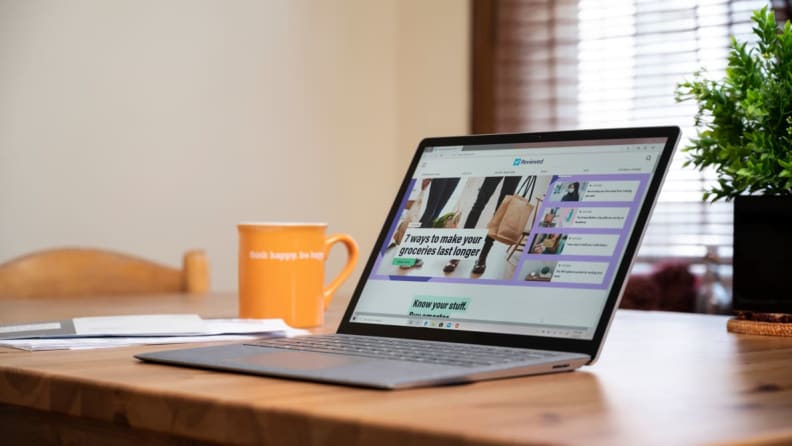
Choosing the right laptop is like choosing the right car: you shouldn't rush it, and getting something you like will make you happy every day.
Now that you’ve armed yourself with some basic knowledge, you’re ready to start shopping. We have dedicated buying guides for virtually every laptop category, from the The Best Laptops Under $500 and the The Best Budget Laptops, to guides for gaming Laptops, Chromebooks, and of course, our master list of The Best Laptops you can buy.
There you can read more in-depth about what you can expect from a laptop in its category. We hope this guide will help you understand why we chose our picks and guide you on your journey to find the best laptop for you.
If you want to know even more about the inner workings of these mechanical beasts, we've written up a glossary below so you can dive deeper into common PC topics.
Glossary
Central Processing Unit (CPU)
Also called the main processor or just “the processor,” this is the heart of a laptop. A CPU receives instructions from all the hardware and software to execute tasks. The CPU’s power determines how many different programs you can run at a time, whether you can run a big complex program like Adobe Premiere, and how quickly you can communicate with the rest of your computer. High-end CPUs not only run faster, but they also have more CPU cores—the Intel Core i5 has about 6 cores depending on model, but the much more expensive Intel Core i9 extreme can have up to 18 cores.
Graphics Processing Unit (GPU)
The GPU is not the graphics card, although the terms are often used interchangeably in informal speech. While every computer (laptop or otherwise) has a GPU to at least handle graphics and certain other tasks, some have discrete GPUs while others have integrated GPUs. An integrated GPU is built on the same chip as the CPU, which allows both units to take up less space—this is why most laptops have integrated graphics. A discrete GPU is on a separate chip, usually found on a graphics card. Usually, discrete GPUs are favorable to integrated GPUs when there is more space to include more powerful processors, so they’re most commonly used in gaming and workstation PCs.
Graphics Card
A graphics card is a GPU mounted to a dedicated board that connects to the motherboard, where the CPU lives. They are usually only found in desktop PCs, since laptops rarely have space for more than a main board.
Solid State Drive (SSD)
A solid state drive is a more modern storage drive than a hard disk drive, offering faster performance, greater reliability, and a more compact size compared to its HDD counterpart. A good SSD will have read and write speeds so fast that your PC should turn on and launch programs in seconds. NVMe SSDs are the newest standard, offering faster performance than SATA SSDs.
Hard Disk Drive (HDD)
A hard disk drive is a storage device that writes bits of data into a magnetic platter. Because it has to physically spin a small arm every time it reads or writes data, it is more prone to failure than an SSD. Because there are restrictions on how quickly the arm can spin, hard disk drives are also significantly slower than SSDs. Because SSDs are much cheaper now than when they first came out, there is little reason to go for an HDD.
Random Access Memory (RAM)
RAM is the PC’s main volatile memory. It works a lot like our short term memory: it remembers the data the PC needs to run programs right now, but it discards the data as soon as you don’t need it anymore. If you plan on running a lot of programs simultaneously or on taxing a program, then you will need enough RAM to do so. For most people, 16GB of RAM is plenty. but casual users can get by with 8GB of RAM while content creators may need 32GB of RAM or more.
Watt-hours (WHr)
Watt-hours are the average amount of Watts a computer uses at a time. If you have a 90WHr battery in your laptop, and your laptop uses at least 15W to run, then you could use your laptop for 6 hours. You can only fit as many Watt-hours into a battery as the laws of physics will allow, so laptop manufacturers increase battery life by either making the battery bigger or making the laptop run on fewer Watts.
The M1 MacBooks’ incredible battery life is possible because the M1 processor needs fewer Watts than last generation’s processors to complete the same amount of work. Meanwhile, gaming laptops and other ultra-powerful laptops have notoriously bad battery life because they consume more Watts at a time.
Hertz (Hz)
Most displays default to 60Hz, which refreshes its image at 60 frames per second. Technically, Hertz is a unit for frequency, measured in times per second. A monitor with a higher refresh rate, like 120Hz, will look smoother to our eyes. That makes it better for fast-paced gaming, for instance. Individuals especially prone to motion sickness should also look into high-refresh rate monitors to ease symptoms.
Pixel (p)
A pixel is a tiny illuminated square on a display. If a display is 1920 x 1080 pixels, then it has 1,920 pixels running along the horizontal edge and 1,080 pixels running along the vertical edge. Multiplying these numbers together gives you the total number of pixels. Larger screens have larger pixels, so they look hazier than smaller screens with the same resolution.
